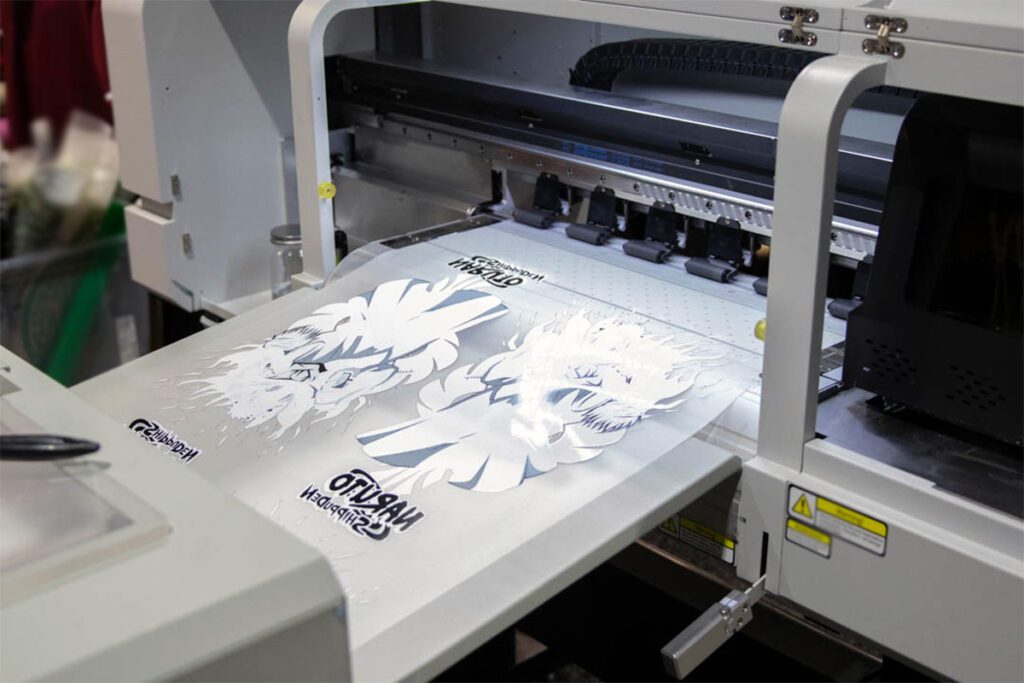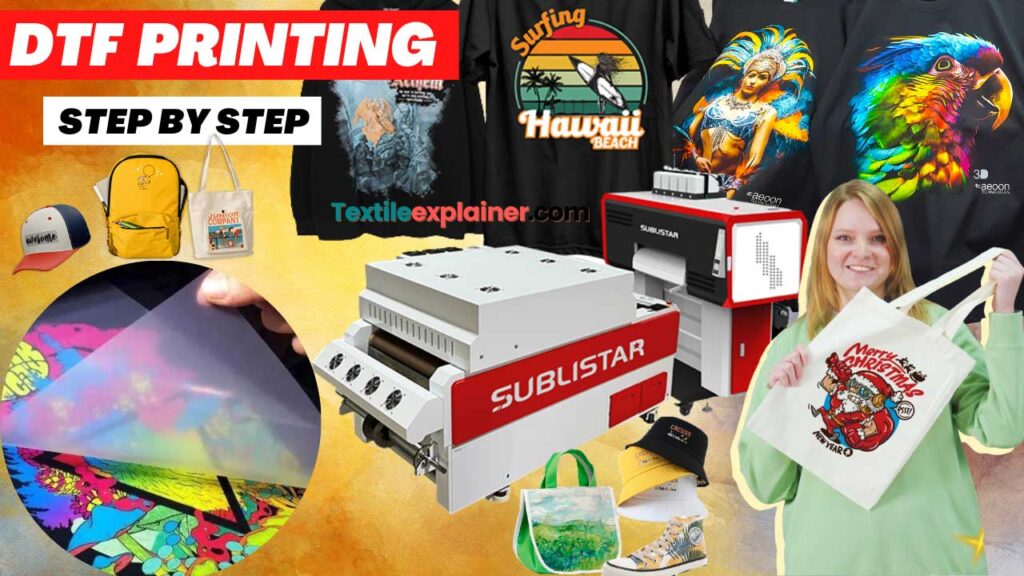A Deep Study DTF Printing: Techniques, Benefits, and Market Applications
A Deep Study DTF Printing: Techniques, Benefits, and Market Applications
Blog Article
Ultimate Overview to DTF Printing Methods for Stunning Textile Designs
Beginning on the trip of understanding DTF printing techniques can open up a world of possibilities for creating visually captivating textile styles. As the textile sector remains to progress, remaining ahead of the contour with cutting-edge printing approaches is important. In this guide, we will certainly discover the intricate details of DTF printing, from realizing the essential fundamentals to unraveling advanced color techniques that can elevate your layouts to brand-new elevations. Keep tuned as we dive right into the subtleties of selecting the best materials, refining the printing process, and getting over usual challenges to attain magnificent outcomes.
Comprehending DTF Printing Fundamentals
DTF printing, a procedure that entails transferring layouts from an unique movie to textiles utilizing warmth and pressure, forms the structure of fabric printing strategies. This innovative technique permits top notch, dynamic layouts to be perfectly moved onto various fabrics with precision and information. The initial step in DTF printing involves developing or choosing a layout that will be printed onto the fabric. This layout is then published onto an unique film making use of a DTF printer, which utilizes details dyes or pigments to guarantee shade precision and sturdiness.
The final result is a stunning, lasting fabric design that is washable, versatile, and immune to fading. On the whole, comprehending the essentials of DTF printing is necessary for mastering this modern fabric printing strategy.
Picking the Right Fabric Materials
Having established the foundational principles of DTF printing methods for fabric designs, the next essential consideration exists in selecting the appropriate textile materials to complement this ingenious procedure efficiently. Additionally, the stretchability of these materials can suit the heat transfer process included in DTF printing without distorting the layout. By selecting the appropriate textile products, developers can take full advantage of the potential of DTF printing to produce resilient and sensational fabric designs.

Mastering the Printing Process
To excel in DTF printing techniques for fabric layouts, mastering the printing process is necessary for achieving constant and top notch outcomes. The temperature, stress, and period of heat application have to be very carefully managed to guarantee correct bond of the layout to the textile. By refining each of these actions in the printing procedure, designers can consistently create spectacular and sturdy textile layouts with DTF printing techniques.
Enhancing Designs With Color Strategies

Moreover, trying out color slopes can bring a feeling of activity and fluidity to the layout. By blending shades seamlessly, a gradient result can be achieved, adding a vibrant and contemporary touch to the fabric style. Furthermore, making use of shade obstructing methods can develop i loved this striking and see page vibrant visuals by comparing various strong colors in distinctive sections of the design.
Furthermore, incorporating metallic or neon shades can supply a distinct and captivating component to the textile design, making it attract attention and show a feeling of vibrancy. When purposefully used, these shade techniques can boost the general aesthetic allure of fabric designs, making them more exciting and unforgettable.
Troubleshooting Common DTF Printing Issues
After discovering different shade methods to enhance textile layouts, it is important to address usual DTF printing problems that might occur throughout the manufacturing process. One usual issue is inadequate adhesion, which can arise from incorrect curing temperature levels or times. To fix this trouble, guarantee that the treating settings are precise and that the sticky made use of is ideal for the specific material being published on. Another regular difficulty is color variances, where colors may show up differently than anticipated. This can be brought on by inaccurate color accounts or settings in the printing software. To tackle this, double-check the color setups and check these guys out profiles to ensure they match the designated design. Additionally, problems with picture quality and intensity can occur because of low-resolution pictures or inappropriate printing techniques. To address this, always utilize top quality pictures and readjust the printing setups for optimal clarity. By recognizing these typical issues and implementing the required troubleshooting steps, you can improve the general high quality of your DTF published fabric styles.
Final Thought
Finally, understanding DTF printing techniques is vital for developing sensational textile designs. By comprehending the essentials of DTF printing, choosing the right products, and improving styles with color strategies, one can achieve impressive results. It is essential to repair usual issues that might develop during the printing procedure to make sure a successful end result. With practice and attention to detail, one can develop attractive and special fabric styles utilizing DTF printing techniques.
DTF printing, a procedure that involves moving designs from a special film to fabrics utilizing warmth and pressure, creates the structure of fabric printing techniques.Having actually established the fundamental principles of DTF printing methods for fabric layouts, the following vital factor to consider lies in choosing the proper fabric materials to enhance this innovative procedure properly. By selecting the best fabric products, developers can take full advantage of the possibility of DTF printing to create spectacular and durable fabric layouts.
To succeed in DTF printing techniques for textile styles, understanding the printing process is vital for accomplishing constant and high-grade outcomes. DTF Printing. By honing each of these steps in the printing procedure, designers can consistently create sturdy and magnificent fabric layouts with DTF printing strategies
Report this page